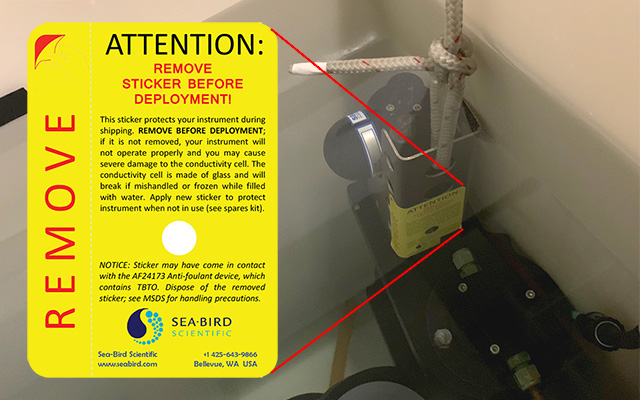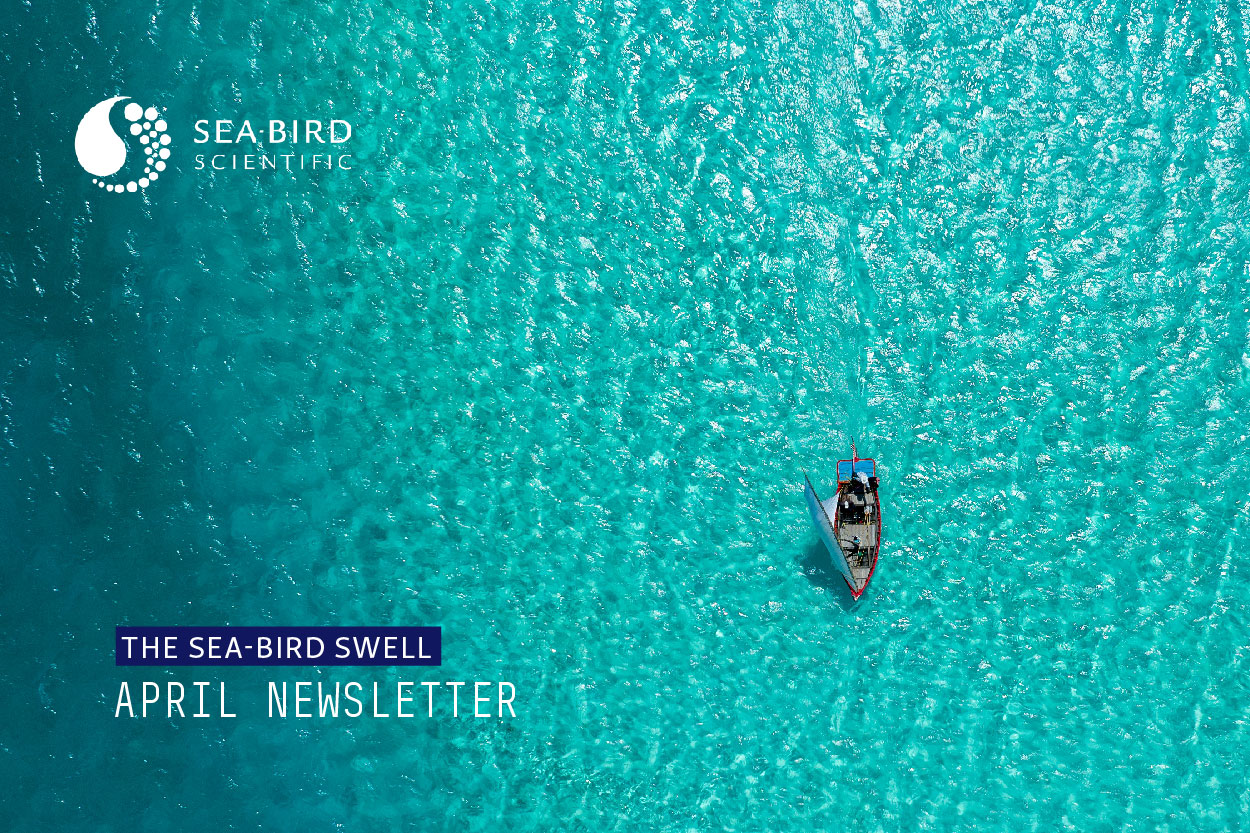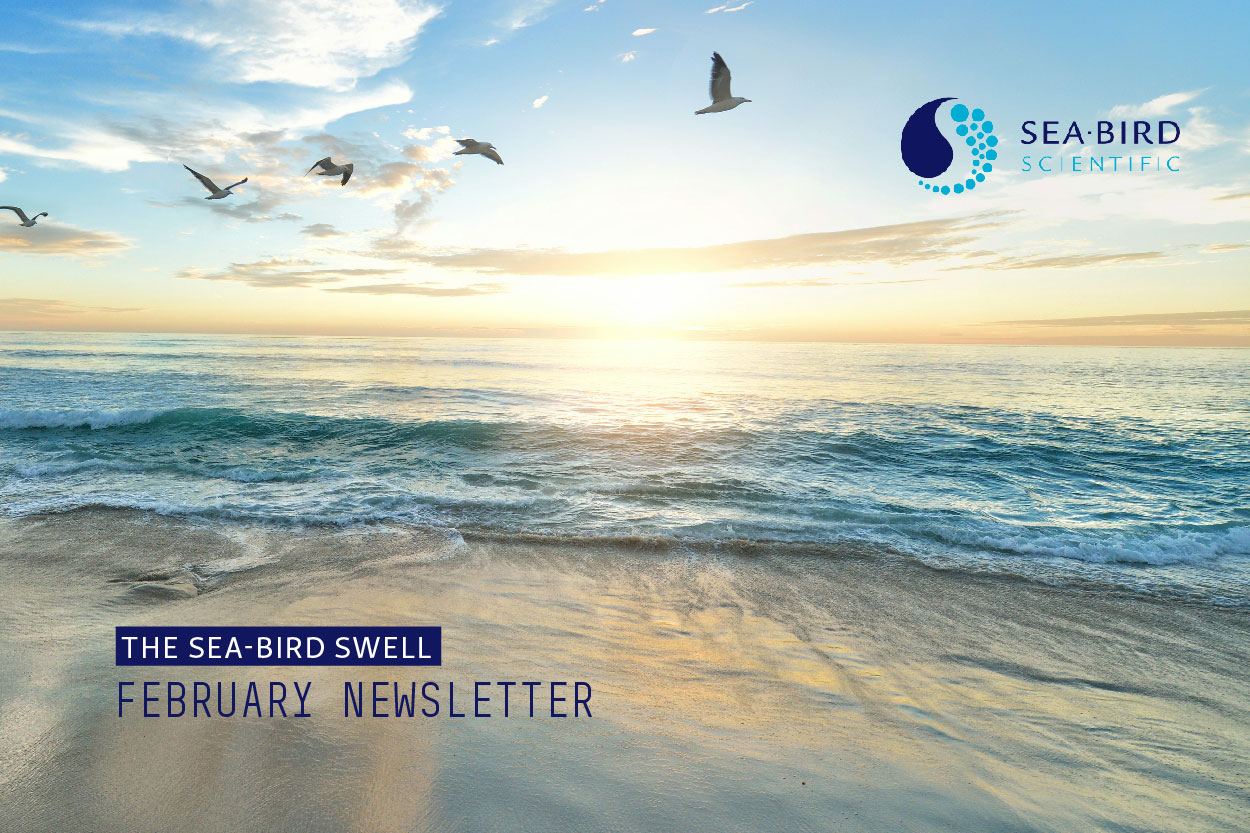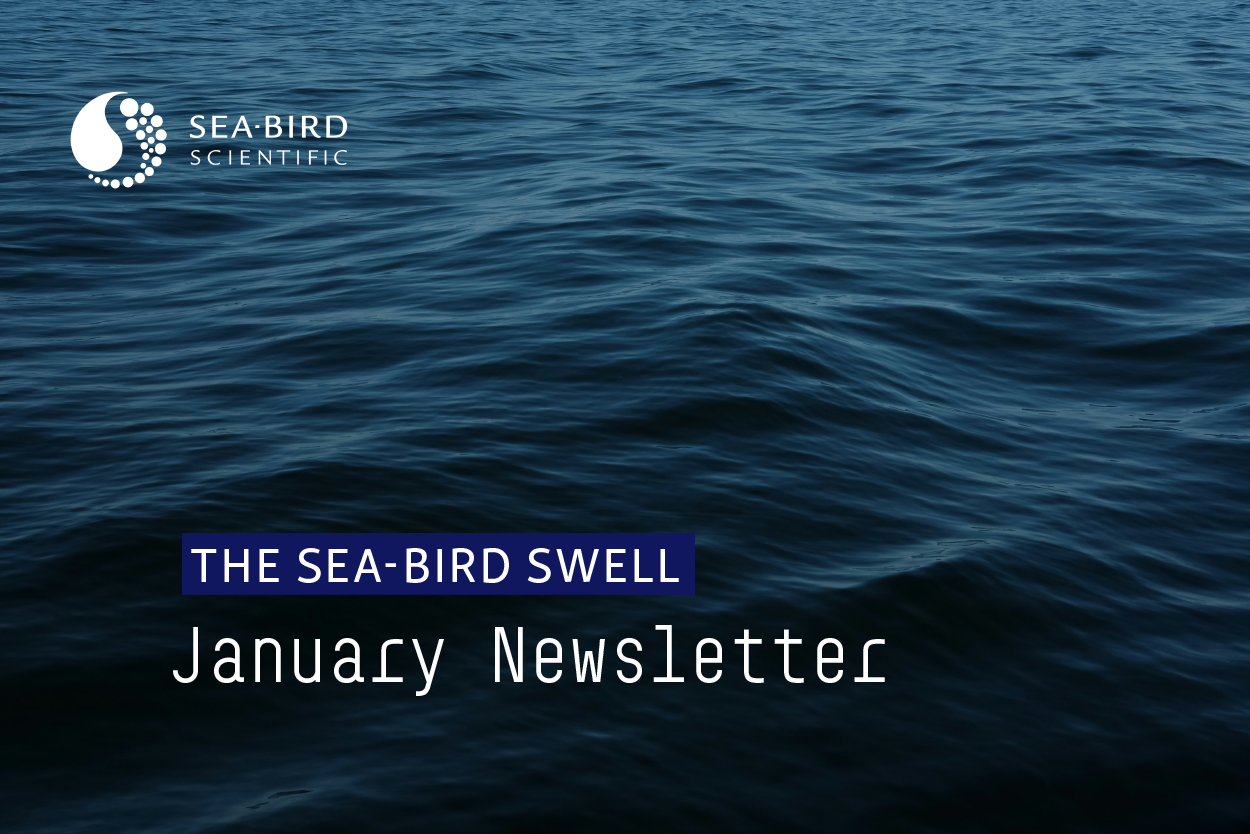Q&A: Unusual Test Bath Data – a Cautionary Tale
September 2019 Newsletter
These data show a small but rather catastrophic deployment error. Shown above, pH and dissolved oxygen data before the highlighted area did not match bottle samples or nearby validation sensors, but data after the highlighted area accurately matched the expected values.
Can you identify the error, and the corrective action taken in the highlighted area? Here’s a hint – instruments shipped with anti-foulant have precautions to contain the chemicals during transit.
Find the Answer

A Simple Mistake: Failed to Remove a Sticker
Most CTDs are shipped with some form of protection to keep debris from entering the conductivity cell. This is doubly important for instruments shipped with TBTO anti-foulant, which must be contained within the CTD’s flow path for safety reasons. In this case, a Deep SeapHOX V2 deployed in a test bath failed to match data from bottle samples and nearby sensors. Closer inspection revealed the cause – the shipping sticker was still in place, covering the intake of the CTD’s pump. Removing the sticker (shown in the highlighted region of the figure) allowed water to flow properly though the CTD, dissolved oxygen sensor, and pH sensor.
This might seem obvious, but the laundry list of deployment steps for even the most minimal oceanographic mooring can be daunting. It’s easy to overlook small details.
Related Posts
Featured Posts
UG2 Workshop 2024
We hope to see you at UG2 '24 We are excited to sponsor the upcoming 2024 Glider Workshop in Ann Arbor, Michigan, from September 10 - 12, 2024. Overview This workshop will bring together the global underwater glider community to strengthen international collaboration...
Oceanology International 2024
We hope to see you at #Oi24 We are excited to return to Oceanology International 2024 again in London, UK from March 12-14. Overview Oceanology International brings together 500+ exhibitors in the only event that links the three key players in the industry:...
Ocean Sciences Meeting 2024
We hope to see you at #OSM24 We are excited to return to Ocean Sciences Meeting 2024 in New Orleans, Louisiana from February 18-23 at booth number #527. Overview The Ocean Sciences Meeting 2024 is co-sponsored by the American Geophysical Union, the Association for the...
Science and Technology
Platform



